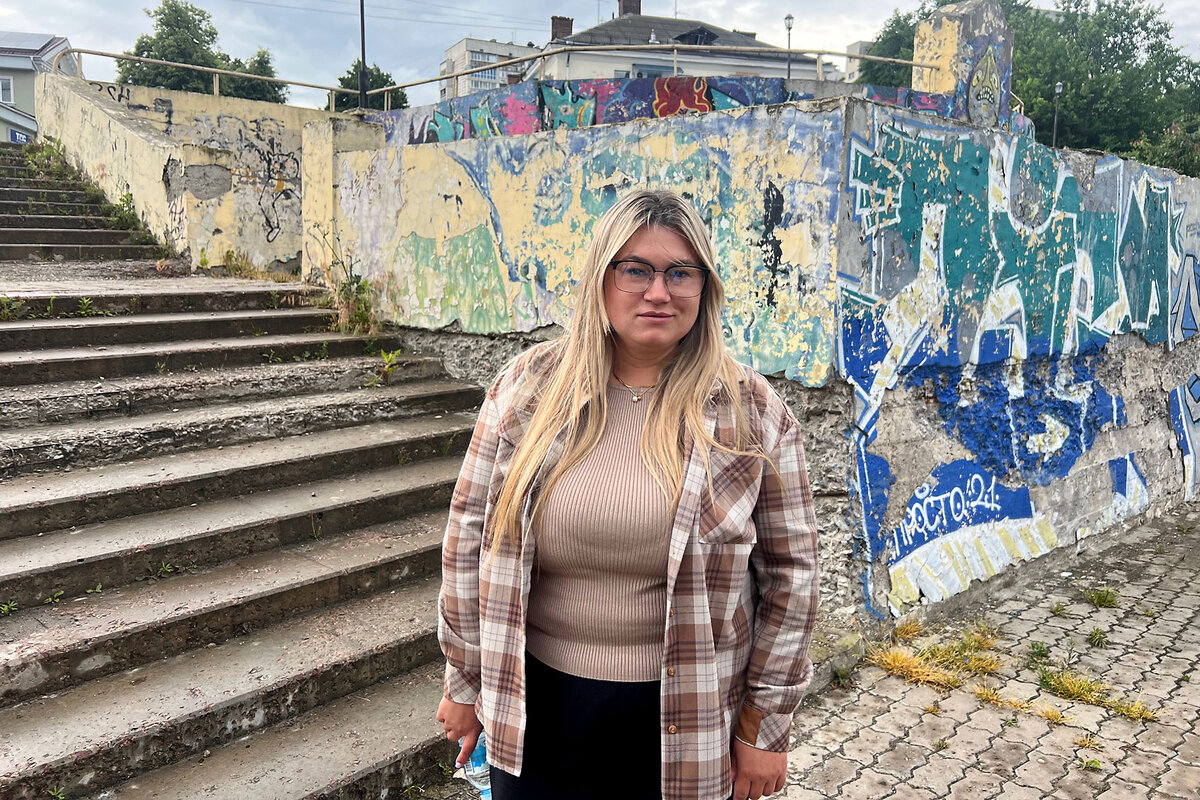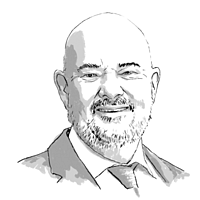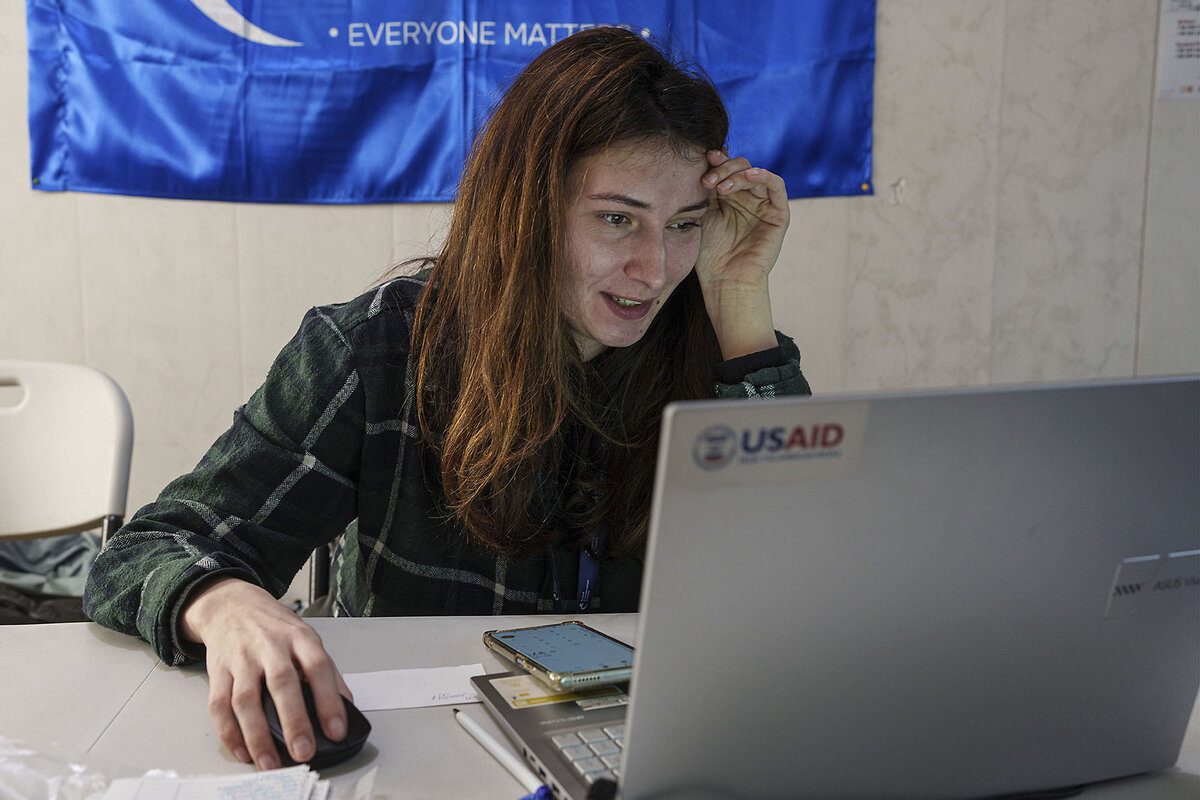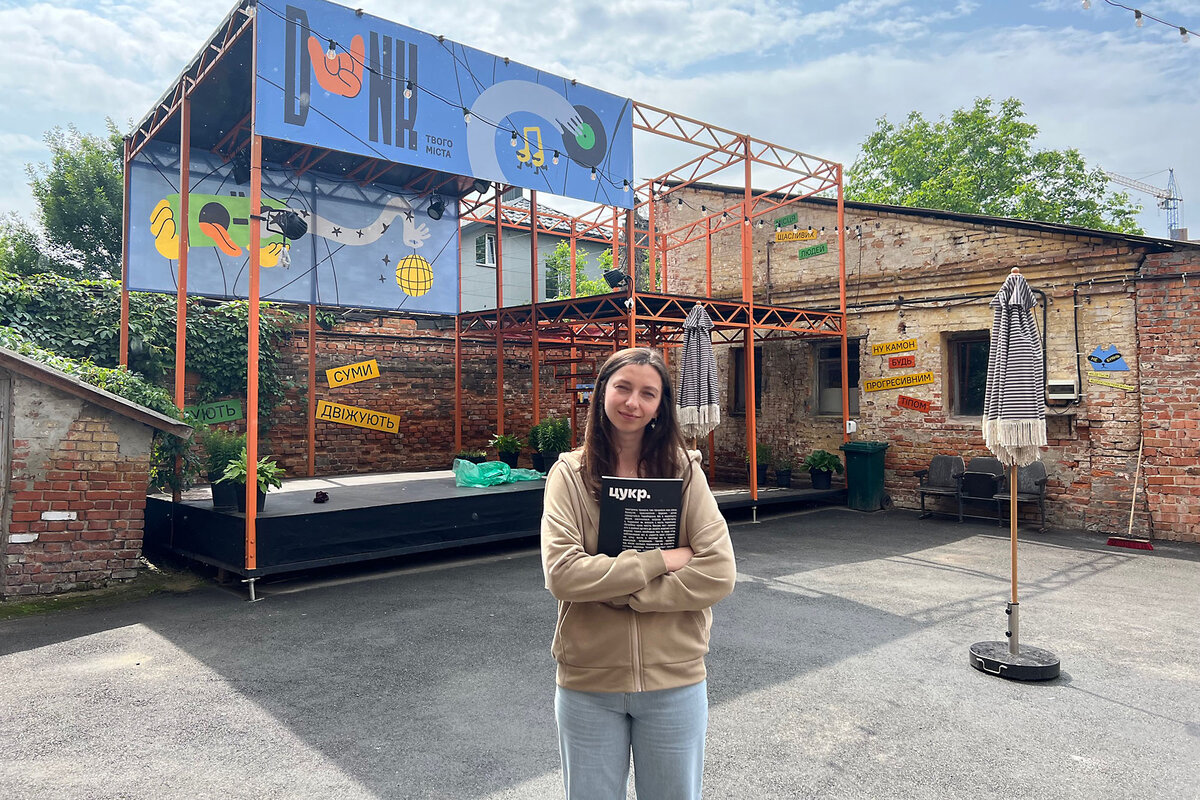Can independent news outlets in Ukraine survive loss of USAID funding?
Loading...
| Sumy, Ukraine
Aliona Yatsyna was exhausted. Along with several friends, she had worked nonstop since 2023 to create a new media site that would be an independent news source covering the Sumy region’s embattled border with Russia in northeastern Ukraine.
But the cofounder and CEO of Kordon Media was also buoyed by the modest journalistic venture’s early success and prospects for growth. With the help of a grant from USAID, the United States’ foreign aid program, Kordon Media had grown from an idea to a news site with six reporters covering a region rife with Russian disinformation.
“USAID was our first big financial support. It helped us get on our feet,” Ms. Yatsyna says. “It was USAID,” she adds proudly, “that allowed us to pay for and equip our first war correspondent.”
Why We Wrote This
USAID funding helped nurture new independent media outlets in Ukraine to play their part in strengthening democracy. Now there are concerns about a return to the days of media owned and dominated by oligarchs, political parties, and the state.
Kordon Media was about to add another war reporter in February, just as Russian forces began amassing on the Sumy border and intensifying cross-border incursions. Then word circulated that the new Trump administration in Washington planned to slash, and perhaps even shut down, USAID.
Shortly thereafter, that grant money stopped.
“Losing USAID was a critical issue for us,” Ms. Yatsyna says. “It was like the intense pressure we were already under just to keep going suddenly tripled.”
Kordon Media is just one of a roster of new media ventures – from news and investigative journalism sites to cultural magazines and podcasts – that USAID funded or helped to launch in Ukraine, primarily since 2020.
Under the Biden administration, Ukraine became the world’s single largest recipient of USAID funding. Grants were awarded for everything from humanitarian assistance, especially following Russia’s invasion in 2022, to small-business development, the modernization of farming and transportation, fighting corruption, and democratization.
USAID funding for Ukraine jumped from $200 million in 2021 to $16 billion in 2023, and totaled $35 billion for the three years preceding President Donald Trump’s return to the White House.
Shifting priorities
That largesse did not survive Mr. Trump’s demands that foreign aid be cut back to align with “America First” policies and promote American interests and values – now much more narrowly defined than under most recent administrations.
For example, such traditional targets of foreign aid as human rights, marginalized communities, and democracy promotion were virtually eliminated as core U.S. interests.
The Biden administration had considered the development of free and independent media to be key to strengthening a young democracy, budgeting $75 million in USAID funding over five years for that purpose.
By the end of 2024 USAID had helped launch and sustain more than 300 local media outlets in Ukraine – nearly three-quarters of all such outlets in the country.
With USAID’s demise, some of Ukraine’s fledgling media have now folded, while others – like Kordon Media – hang on as they explore new funding and revenue models.
While no one in Ukraine’s media environment is celebrating USAID’s exit, some say at least while it lasted the U.S. assistance acted like seed money.
“USAID money formed a basis for independent media to launch and operate from,” says Ola Myrovych, CEO of Lviv Media Forum, one of Ukraine’s largest international media events and journalist development and support organizations.
“Losing that funding was a crisis for sure, but in Ukraine we are living in a constant crisis from the war,” she says. “That has forced us to learn to adapt, and I think that ability to adapt will help us avoid this crisis for independent media becoming a catastrophe.”
“Renationalization” of the media
Still, some Ukrainian experts worry USAID’s absence will encourage a return to the days of media dependent upon oligarchs, political parties, or the state.
“The loss of USAID is beginning to highlight the risk of what I call a renationalization of the Ukraine media market,” says Otar Dovzhenko, an expert at Lviv Media Forum.
Indeed, he sees the post-USAID moment as a period of both promise and peril – of “opportunity” for media outlets to develop new revenue models that sustain their independence, but also of “danger” of reverting to traditional revenue sources promoting their own interests.
Mr. Dovzhenko says it’s inevitable that some outlets will disappear. “This is not a tragedy,” he says, given the recent proliferation of new media. “We have more mouths than we can feed.”
His hope is that the outlets that survive take advantage of the moment to enhance their independence.
“This is a chance for Ukrainian media to think about how to organize their economic model in a better way,” he says. “My worry is that some will take what seems like the easy way out and return to a dependence on government.”
Securing revenues
Cukr Media in Sumy is determined to pursue the “opportunity” option.
The news site, magazine, and news-related events organizer created in 2019 has relied in part on U.S. funding but since its inception has aimed for a diversified revenue stream to maintain editorial independence.
“Our goal is a budget that is spread out over a variety of income sources – about a third from subscribers, a third from businesses, a third from grants – but doesn’t leave us dependent on any one of them,” says Aliona Serhiienko, Cukr’s operations manager.
Paid subscribers recently topped 840 – boosting subscription revenue to over half of the goal of making up a third of Cukr’s budget. Revenue from businesses includes sales at Cukr’s store selling everything from Cukr promotional items to Sumy gear and locally made products.
“The loss of USAID was like a blow to the head across the media community,” Ms. Serhiienko says. “But the way I see it, we are like startups. USAID provided the seed money for some of the startups, but as we know, not all startups survive.”
With the largest international source of media funding gone, many media outlets turned to a logical replacement – Ukraine’s European neighbors. Indeed, shortly after USAID’s demise, the European Union announced $18 million in new grant money for Ukrainian media.
But Oleh Dereniuha, managing editor of “MykNews” in the southern river port city of Mykolaiv, recounts how his publication realized that the competition for European grants was going to resemble a stampede.
“Recently the U.K. government announced they were planning to award about six media grants – and in response they got more than 600 applications,” he says. “That’s the USAID effect.”
In any case, Mr. Dereniuha says he advises media to be wary of simply turning to the Europeans as the new saviors of Ukraine’s independent media.
“I think the European assistance and development budgets are going to be shrinking as well,” he says, “because the same right-wing political forces that attacked USAID are gaining ground in Europe.”
Mr. Dereniuha says MykNews’ diversified revenue stream has it on pretty solid operating terrain for now. But he cautions that Ukraine will lose if media like his that focus on local issues disappear.
He cites the exhaustive investigation MykNews did recently into the city’s failure to repair war-damaged water infrastructure, which left much of Mykolaiv receiving nonpotable water.
“That’s the kind of essential service media should perform in a democratic society,” he says. “But who will do it if the local outlets are gone?”
U.S. interests
Ms. Myrovych in Lviv says of course the future of Ukraine’s independent media matters most to Ukrainians. But she says one can also argue why it should matter to Americans as well and thus why USAID funding worked in America’s interests.
“USAID funding made possible investigations into Russia’s war crimes in the occupied territories, and it funded reports about churches that were prohibited from operating in the occupied territories,” she says. “I think the issue of religious freedom is important to many Americans.”
One overarching U.S. national security interest that in her view USAID was addressing was the threat from Russian disinformation.
“American support was critical to our ability to counter the disinformation narrative,” she says. “But USAID’s withdrawal is a big loud signal to Russia and China that says, ‘OK, this space is open to you now.’”
Oleksandr Naselenko contributed to the reporting of this piece.








